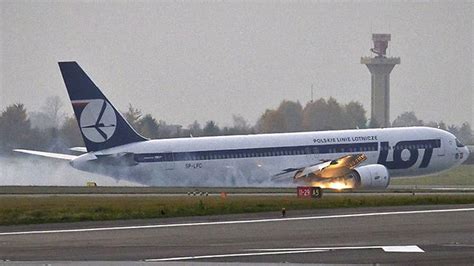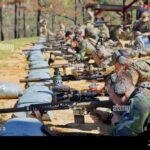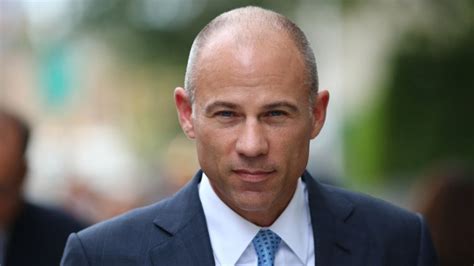
Emergency landings involving the Boeing 787 Dreamliner’s sister aircraft, the 767, have reignited safety concerns raised by a former Boeing engineer regarding potential manufacturing flaws affecting the structural integrity of the planes. These concerns, detailed in a Senate hearing, allege shortcuts in the production process could compromise the aircraft’s lifespan and safety, specifically focusing on gaps between fuselage sections not meeting required standards.
Four recent emergency landings involving Boeing 767 aircraft, although not directly involving the 787 Dreamliner, have amplified scrutiny of Boeing’s manufacturing processes, validating whistleblower Sam Salehpour’s allegations about potential safety defects in the widebody jets, including the 787. Salehpour claims that Boeing took manufacturing shortcuts when assembling the 787 Dreamliner, leading to improperly filled gaps between fuselage sections. These gaps, if left unaddressed, could lead to premature structural fatigue and ultimately, catastrophic failure over the aircraft’s operational lifespan.
Salehpour, a quality engineer who worked for Boeing for more than a decade, testified before the Senate Permanent Subcommittee on Investigations, alleging that he witnessed Boeing employees using force to close gaps larger than specified in the 787’s assembly. The process, he said, involved using excessive force and potentially shimming techniques to conceal misaligned parts rather than properly addressing the root cause of the fit-up issues. Salehpour contends that these practices deviate from established engineering standards and FAA regulations.
“I did see people jumping on the parts,” Salehpour told lawmakers, describing the methods used to force misaligned components into place. He further elaborated that instead of meticulously measuring and correcting discrepancies, workers would sometimes apply brute force, raising concerns about the long-term structural integrity of the aircraft.
The core of Salehpour’s allegations revolves around the practice of “shimming.” Shimming involves inserting thin pieces of material to fill gaps between components. While shimming is a common practice in aerospace manufacturing, Salehpour argues that Boeing’s implementation of shimming on the 787 was excessive and potentially masked underlying manufacturing defects. He claims that these improperly filled gaps could lead to fatigue cracking and potential structural failure after prolonged use.
Salehpour stated that Boeing failed to properly address the root causes of the misalignments and instead opted for quick fixes that prioritized production speed over long-term safety. He claimed that Boeing management disregarded his concerns and retaliated against him for raising these issues internally. This retaliation, according to Salehpour, included being transferred to a different department and facing increased scrutiny.
Salehpour’s legal team has filed a whistleblower complaint on his behalf, outlining the alleged safety concerns and the retaliation he faced after raising these issues internally. The complaint alleges that Boeing prioritized production speed and cost savings over safety and that this created a culture where concerns about manufacturing quality were suppressed.
The Federal Aviation Administration (FAA) is currently investigating Salehpour’s claims. The investigation will involve a thorough review of Boeing’s manufacturing processes for the 787 Dreamliner and an assessment of the potential impact of the alleged defects on the aircraft’s safety. The FAA has the authority to impose fines, require corrective actions, or even ground the 787 fleet if the investigation confirms Salehpour’s allegations.
Boeing has strongly refuted Salehpour’s claims, asserting that the 787 Dreamliner is safe and meets all regulatory requirements. The company claims that it has conducted extensive testing and analysis to ensure the structural integrity of the aircraft. Boeing officials have stated that they are cooperating with the FAA’s investigation and are confident that the investigation will demonstrate the safety of the 787.
In a public statement, Boeing asserted that “these claims about the integrity of the 787 are inaccurate and do not represent the comprehensive work Boeing has done to ensure the quality and long-term safety of the aircraft.” The company emphasized its commitment to safety and its adherence to rigorous quality control standards.
However, the recent emergency landings involving the 767 have added fuel to the fire, prompting renewed scrutiny of Boeing’s safety culture and manufacturing practices. While the 767 and 787 are distinct aircraft models, they share certain manufacturing processes and structural design principles. The fact that the 767, another widebody jet manufactured by Boeing, has experienced multiple recent emergency landings due to potential mechanical issues has raised questions about whether similar quality control issues might exist across Boeing’s product line.
These incidents underscore the importance of robust quality control measures and a safety-first culture within Boeing. Critics argue that Boeing’s focus on production targets and cost-cutting measures may have compromised its commitment to safety, potentially leading to the alleged manufacturing defects raised by Salehpour.
The FAA’s investigation into Salehpour’s claims is ongoing, and the outcome could have significant implications for Boeing and the broader aviation industry. If the FAA confirms Salehpour’s allegations, Boeing could face significant financial penalties, reputational damage, and potentially even a grounding of the 787 fleet. More importantly, the investigation could lead to a fundamental shift in Boeing’s safety culture and manufacturing practices, with a renewed emphasis on quality control and long-term safety over short-term profits.
The emergency landings of the 767, combined with the whistleblower allegations, have created a perfect storm of scrutiny for Boeing. The company is facing intense pressure from regulators, lawmakers, and the public to address these safety concerns and restore confidence in its products. The future of the 787 Dreamliner, and potentially Boeing’s reputation, hinges on the outcome of the FAA’s investigation and the company’s response to these serious allegations.
Salehpour’s allegations extend beyond just the 787. He also raised concerns about similar manufacturing issues affecting the 777 program, suggesting that the problems may be more widespread than initially believed. According to Salehpour, the pressure to meet production targets and reduce costs has led to a systemic disregard for established engineering standards and FAA regulations across multiple Boeing programs.
The allegations regarding the 777 program further exacerbate the safety concerns surrounding Boeing’s manufacturing processes. If true, these allegations would suggest that the problems are not isolated to a single aircraft model but rather represent a more pervasive issue within the company’s culture and operations.
The Senate hearing where Salehpour testified provided a platform for him to present his concerns directly to lawmakers and the public. His testimony was compelling and raised serious questions about Boeing’s commitment to safety. Several senators expressed their concern about the allegations and vowed to hold Boeing accountable for any wrongdoing.
Senator Richard Blumenthal, chairman of the Senate Permanent Subcommittee on Investigations, stated that “These allegations raise serious questions about Boeing’s quality control processes and its commitment to safety. We will conduct a thorough investigation to determine whether these allegations are credible and what steps need to be taken to ensure the safety of the flying public.”
The investigation into Boeing’s manufacturing practices is likely to be a lengthy and complex process. The FAA will need to review thousands of documents, interview numerous employees, and conduct extensive inspections of Boeing’s facilities. The outcome of the investigation will depend on the evidence gathered and the FAA’s assessment of the potential risks to aviation safety.
In the meantime, the public remains concerned about the safety of flying on Boeing aircraft. The recent incidents and allegations have eroded public confidence in the company, and it will take significant effort to restore that trust. Boeing will need to demonstrate a clear commitment to safety and transparency in order to regain the public’s confidence.
The situation has also prompted increased scrutiny from airlines that operate Boeing aircraft. Airlines are demanding assurances from Boeing that its aircraft are safe and meet all regulatory requirements. Some airlines have even threatened to cancel orders for Boeing aircraft if the company fails to address these safety concerns.
The financial implications of these allegations could be significant for Boeing. If the FAA orders a grounding of the 787 fleet, Boeing could lose billions of dollars in revenue. The company could also face significant legal liabilities if it is found to have been negligent in its manufacturing practices.
The long-term impact of these allegations on Boeing’s reputation remains to be seen. The company’s brand has been severely damaged by the recent incidents and allegations, and it will take years of consistent performance and a demonstrated commitment to safety to rebuild that brand.
The unfolding situation serves as a stark reminder of the importance of safety in the aviation industry. The aviation industry has a remarkable safety record, but that record is built on constant vigilance and a commitment to continuous improvement. The recent incidents and allegations involving Boeing highlight the need for continued scrutiny of manufacturing practices and a strong safety culture within the industry.
The consequences of a major aviation accident are catastrophic, and it is imperative that every effort be made to prevent such accidents from occurring. This requires a collaborative effort from manufacturers, regulators, airlines, and pilots to ensure that aircraft are designed, manufactured, operated, and maintained to the highest safety standards.
The investigation into Boeing’s manufacturing practices is a critical step in ensuring the safety of the flying public. The outcome of the investigation will have far-reaching implications for Boeing, the aviation industry, and the millions of people who fly every year.
Beyond the immediate safety concerns, the allegations against Boeing raise broader questions about corporate governance and accountability. Critics argue that Boeing’s focus on shareholder value has come at the expense of safety and quality. They contend that the company has prioritized profits over people, leading to a decline in its safety culture.
The situation also highlights the importance of whistleblower protection laws. Whistleblowers play a critical role in uncovering wrongdoing and holding companies accountable. Strong whistleblower protection laws are essential to encourage individuals to come forward with information about potential safety violations without fear of retaliation.
The Boeing situation is a complex and multifaceted issue with significant implications for the aviation industry and the broader business world. It is a story that will continue to unfold in the coming months and years, and one that will undoubtedly shape the future of aviation safety. The lessons learned from this experience will be crucial in preventing similar incidents from occurring in the future.
Ultimately, the goal is to ensure that the aviation industry remains the safest mode of transportation in the world. This requires a collective commitment to safety, transparency, and accountability from all stakeholders. The investigation into Boeing’s manufacturing practices is a critical step in achieving that goal.
The Specifics of Shimming and Its Potential Dangers:
Salehpour’s accusations regarding shimming are particularly concerning because while shimming is an accepted practice in aerospace, its misuse can mask underlying problems. Aerospace components must fit together with extremely high precision. Shims are used to fill small gaps that inevitably arise due to manufacturing tolerances. However, when gaps are significantly larger than specified, excessive shimming can become problematic.
The dangers associated with improper shimming include:
- Concealed Misalignment: Excessive shimming can hide fundamental misalignments between structural components. These misalignments create stress concentrations, making the affected areas more susceptible to fatigue cracking.
- Compromised Load Transfer: Shims are designed to evenly distribute loads between components. However, if the shims are not properly sized or installed, they can create uneven load distribution, leading to premature failure of the surrounding structure.
- Corrosion Issues: Gaps filled with shims can be vulnerable to corrosion, especially if the shims are made of different materials than the surrounding components. Corrosion can weaken the structure and lead to catastrophic failure.
- Difficulty in Inspection: Excessive shimming can make it difficult to inspect the underlying structure for damage. Inspectors may not be able to detect cracks or other defects that are hidden beneath the shims.
Salehpour alleges that Boeing used shimming excessively on the 787 Dreamliner, effectively masking underlying manufacturing defects. He claims that these improperly filled gaps could lead to fatigue cracking and potential structural failure after prolonged use. The FAA’s investigation will need to determine whether these allegations are credible and what steps need to be taken to address any potential safety risks.
The FAA Investigation and Potential Outcomes:
The FAA’s investigation into Salehpour’s claims is a critical step in ensuring the safety of the 787 Dreamliner. The investigation will likely involve a thorough review of Boeing’s manufacturing processes, including:
- Document Review: The FAA will review thousands of documents, including engineering drawings, manufacturing procedures, quality control records, and inspection reports.
- Employee Interviews: The FAA will interview numerous Boeing employees, including engineers, mechanics, and managers, to gather information about the company’s manufacturing practices.
- Facility Inspections: The FAA will conduct on-site inspections of Boeing’s manufacturing facilities to assess the quality of the company’s production processes.
- Structural Testing: The FAA may conduct structural testing of 787 components to assess their resistance to fatigue cracking and other forms of damage.
Based on the results of its investigation, the FAA could take a number of actions, including:
- Issuing Fines: The FAA could fine Boeing if it finds that the company violated safety regulations.
- Requiring Corrective Actions: The FAA could require Boeing to take corrective actions to address any manufacturing defects that are identified.
- Issuing Airworthiness Directives: The FAA could issue airworthiness directives (ADs) requiring airlines to inspect and repair 787 aircraft.
- Grounding the Fleet: In the most extreme scenario, the FAA could ground the entire 787 fleet if it determines that the aircraft are unsafe to fly.
The outcome of the FAA’s investigation will have a significant impact on Boeing and the aviation industry. A finding of serious manufacturing defects could lead to significant financial losses for Boeing and damage to its reputation. It could also lead to increased scrutiny of Boeing’s manufacturing practices and a greater emphasis on safety within the company.
Boeing’s Response and the Importance of Transparency:
Boeing has strongly refuted Salehpour’s claims, asserting that the 787 Dreamliner is safe and meets all regulatory requirements. The company has stated that it is cooperating with the FAA’s investigation and is confident that the investigation will demonstrate the safety of the 787.
However, Boeing’s response has been met with skepticism by some critics, who argue that the company has a history of downplaying safety concerns. These critics point to previous incidents involving Boeing aircraft, such as the 737 MAX crashes, as evidence that the company is willing to prioritize profits over safety.
In order to restore public confidence, it is essential that Boeing be transparent about its manufacturing practices and cooperate fully with the FAA’s investigation. The company should also take steps to address any legitimate safety concerns that are raised, even if those concerns are not directly related to Salehpour’s allegations.
Transparency and accountability are essential for maintaining public trust in the aviation industry. When companies are open and honest about their safety practices, it helps to build confidence that they are committed to protecting the lives of passengers.
The Role of Whistleblowers in Aviation Safety:
Whistleblowers play a critical role in uncovering wrongdoing and holding companies accountable. In the aviation industry, whistleblowers can provide valuable information about potential safety violations that might otherwise go undetected.
However, whistleblowers often face significant risks, including retaliation from their employers. It is essential that whistleblowers are protected from retaliation and that they have a safe and confidential channel for reporting their concerns.
Strong whistleblower protection laws are essential to encourage individuals to come forward with information about potential safety violations without fear of reprisal. These laws should protect whistleblowers from retaliation, provide them with financial incentives for reporting wrongdoing, and ensure that their identities are kept confidential.
Salehpour’s case highlights the importance of whistleblower protection laws and the need to create a culture where employees feel safe reporting safety concerns without fear of retaliation. His willingness to come forward with his allegations, despite the potential risks, is a testament to his commitment to safety and his belief that the truth should be told.
FAQ:
-
What are the specific safety concerns raised about the Boeing 787 Dreamliner? The primary safety concern revolves around alleged manufacturing shortcuts, specifically regarding improperly filled gaps between fuselage sections. Whistleblower Sam Salehpour claims that Boeing employees used excessive force and shimming to conceal misaligned parts, which could lead to premature structural fatigue and potential failure over the aircraft’s lifespan. These concerns are based on engineering standards and FAA regulations.
-
How are the emergency landings of Boeing 767 aircraft related to these concerns about the 787? While the 767 and 787 are different models, the 767’s recent emergency landings due to potential mechanical issues have amplified scrutiny of Boeing’s overall manufacturing and quality control processes. The incidents suggest that similar quality control problems may exist across multiple Boeing aircraft models, lending more weight to Salehpour’s allegations about the 787.
-
What is Boeing’s response to these allegations and the FAA investigation? Boeing has strongly refuted Salehpour’s claims, asserting that the 787 Dreamliner is safe and meets all regulatory requirements. The company states it is cooperating with the FAA’s investigation and is confident that the investigation will demonstrate the safety of the 787. However, this response has been met with skepticism by some critics, who point to Boeing’s past issues with safety concerns.
-
What are the potential consequences if the FAA confirms the whistleblower’s allegations? If the FAA confirms the allegations, Boeing could face significant financial penalties, reputational damage, and potentially a grounding of the 787 fleet. This could lead to substantial financial losses, increased scrutiny of Boeing’s manufacturing practices, and a greater emphasis on safety within the company. It could also lead to airworthiness directives requiring airlines to inspect and repair 787 aircraft.
-
What role do whistleblowers play in ensuring aviation safety, and what protections are in place for them? Whistleblowers play a crucial role in uncovering wrongdoing and holding companies accountable in the aviation industry. They provide valuable information about potential safety violations that might otherwise go undetected. Strong whistleblower protection laws are essential to encourage individuals to come forward with safety concerns without fear of retaliation. These laws should protect whistleblowers from retaliation, provide financial incentives for reporting wrongdoing, and ensure their identities are kept confidential.









